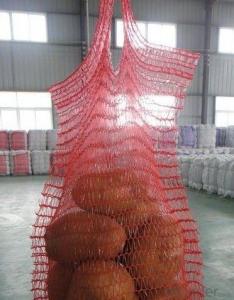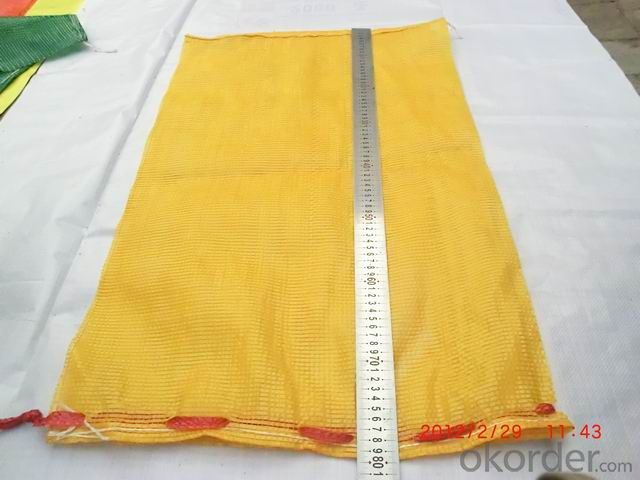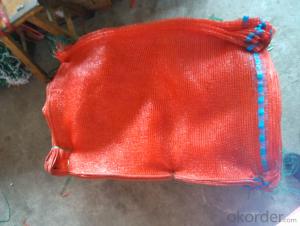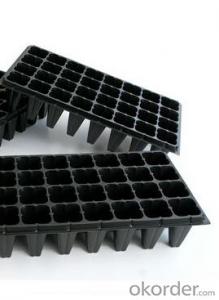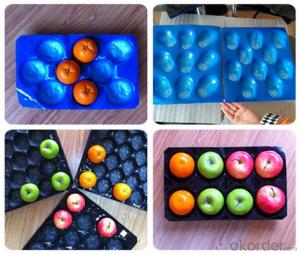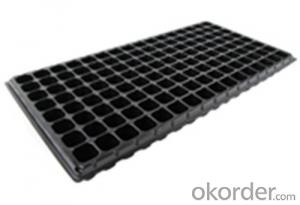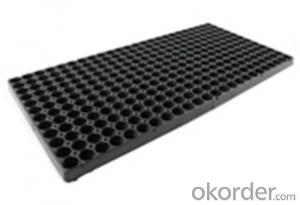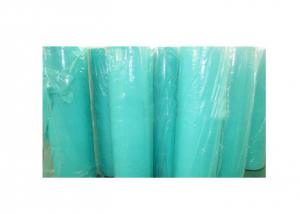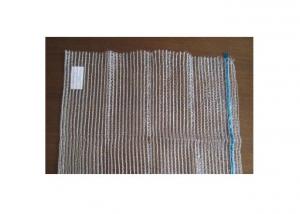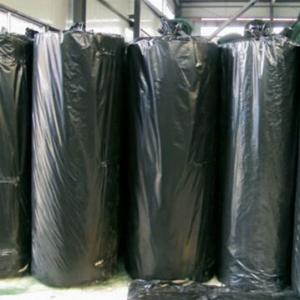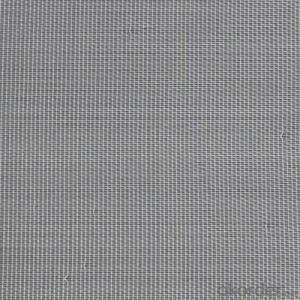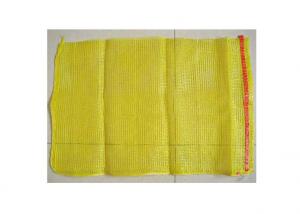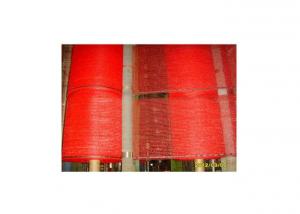Mesh bag for vegetables 50x80cm leno bag tape filament
- Loading Port:
- China Main Port
- Payment Terms:
- TT OR LC
- Min Order Qty:
- -
- Supply Capability:
- -
OKorder Service Pledge
OKorder Financial Service
You Might Also Like
1.What is your main products ?
Our main products are made from PE ,PP etc and could be used for agriculture and construction ,etc .
2.What is your payment term ?
We could accept TT ,LC.
3.What is your delivery time ?
The delivery time is around 30days per container, sometimes we have stocks .
Mesh Bag for vegetable and fruits .
Now have 500 employees.
Warp-making machines---3 sets
Weft-making machines---4 sets
Tubular leno mesh bags-making machines---210 sets
Plain leno mesh Bags-making machines---45 sets
pp fabric roll-hot cutting machines---4 sets
sewing machines---300 sets
bale packing machines--- 4 sets
It is weaved by High-density polyethylene (HDPE/PP), used as packing vegetable and fruit, such as onion, carrot, garlic, cabbage, lemon, pecans, etc.
Based on order, other weaves are also available.
Specifications:
Material : PE/PP
Weight: 17g/bag,18g/bag,22g/bag, any weight as demands.
Size: 50×80CM, 40×60CM,42X60CM,45×75CM, any size as demands.
Feature:
1) Top: hemmed /with drawstring or without handle is available
2) Bottom: sealed., single /double folded ,single.double
3) Capacity:bags with or without drawstring for packed weight from 1kg to 55kg
Packing: 2000pcs/bale,3000pcs/bale,6000pcs/bale,Or according your requests. Container capacity: 12tons/20GP, 23tons/40GP, 25tons/40HQ.
Application:used as packing vegetable and fruit, such as onion, carrot, garlic, cabbage, lemon, pecans, etc.
- Q: This question asks about the methods farmers use to protect their crops from ultraviolet (UV) radiation using agricultural plastics.
- <p>Farmers protect their crops from UV radiation using agricultural plastics in several ways. They often use UV-stabilized plastic films in greenhouses and row covers. These films are designed to filter out harmful UV rays while still allowing other wavelengths of light necessary for photosynthesis to pass through. Additionally, farmers may apply UV-absorbing additives to plastic mulches, which can help to reduce the impact of UV radiation on the soil and plants. By managing the UV exposure, farmers can reduce crop damage, enhance growth conditions, and improve overall yield and quality.</p>
- Q: Are nursery trays suitable for starting seeds?
- Yes, nursery trays are suitable for starting seeds. They provide a controlled environment for seed germination and allow for easy transplanting once the seedlings have grown. The trays also have drainage holes to prevent waterlogging, which is essential for healthy seed growth.
- Q: How do agricultural plastic products help with plant grafting?
- Agricultural plastic products help with plant grafting by providing a protective environment for the grafted plant. Plastic covers or tunnels can be used to create a controlled microclimate that promotes successful grafting by maintaining optimal temperature, humidity, and moisture levels. This protection enhances the survival rate of the grafted plants and accelerates their growth, leading to stronger and healthier crops. Additionally, plastic mulch films can suppress weed growth, conserve soil moisture, and prevent soil erosion, further supporting the grafting process by providing a favorable growing environment for the grafted plants.
- Q: Can nursery trays be used for starting bonsai seedlings?
- Yes, nursery trays can be used for starting bonsai seedlings. They provide a convenient and efficient way to organize and care for multiple seedlings at once. However, it is important to ensure that the trays have proper drainage holes and are filled with suitable bonsai soil to promote healthy growth.
- Q: I have a plastic terrarium and would like to attach a heater under it or use a lamp heater. What are the consequences of heating plastic? Am I better off getting a glass tank?
- It melts if you get it too hot.
- Q: Are agricultural plastic products used in sustainable soil nutrient cycling?
- Yes, agricultural plastic products can be used in sustainable soil nutrient cycling. Plastic mulch, for example, can help retain soil moisture, prevent weed growth, and increase crop yields, leading to more efficient nutrient cycling. Additionally, plastic covers or tunnels can create optimal growing conditions, facilitating the decomposition of organic matter and the release of nutrients into the soil. However, it is important to properly manage and dispose of agricultural plastic waste to ensure long-term sustainability.
- Q: How do agricultural plastic products aid in irrigation efficiency?
- Agricultural plastic products aid in irrigation efficiency by reducing water evaporation, preventing weed growth, and delivering water directly to the plant roots, ensuring optimal water usage and minimizing wastage.
- Q: Are there any government regulations on the disposal of agricultural plastic products?
- Yes, there are government regulations on the disposal of agricultural plastic products. These regulations vary from country to country and may include guidelines on proper disposal methods, recycling requirements, and restrictions on burning or burying plastic waste. These regulations aim to minimize environmental impact and promote sustainable waste management practices in the agriculture sector.
- Q: How do you prevent algae growth in nursery trays?
- To prevent algae growth in nursery trays, there are a few effective methods: - Ensure proper drainage by using trays with sufficient drainage holes and avoiding overwatering. - Keep the trays clean by regularly removing any debris, dead plant material, or algae that may have started to grow. - Provide adequate air circulation by spacing out the trays and avoiding overcrowding. - Avoid excessive sunlight exposure by placing the trays in shaded areas or using shade cloth. - Utilize preventive measures such as using sterilized soil or growing media, as well as adding beneficial bacteria or fungi to the trays to outcompete algae growth.
- Q: What will work best for heating water and why?Thin black plastic or black metal pipes? Maybe ever painted matt black copper piping?
- The answer is it depends on the exact type of plastic or metal and the thermal characteristics of each. Generally speaking, metal has a higher thermal conductivity than, say, standard plastic or PVC piping. PVC pipe is a great insulator and doesn't handle thermal stress well. Some types of plastic - especially cheap black plastic, will melt or stretch when heated. Their are some plastics that will work as well or better than metal, but the generally cost much more. Copper pipe works well, but if you paint it black, you will want to use a thin layer of flat black paint that isn't enamel or latex - these will act as an insulator and prevent the copper pipe from absorbing as much heat as a unpainted pipe. The pain also tends to come off quickly as the copper pipe expands and contracts (thermal stresses). Paintin it probably isn't worth the expense and effort. Your best bet is to use a plain but tarnished copper pipe and make sure the heat box traps as much light and heat as possible. Use a type of reflective glazed glass that allows light in, but not out. Seal the box tightly and insultate the heck out of it. Two other things you can do from to increase efficiency will little extra cost: 1. Use a Fresnel lens and/or reflectors to gather and concentrate more light into the heat box. 2. Beyond insulating the heat box to retain heat, add a thermal absorption layer to the box itself. Putting - for example, a 1/2 think piece of blackened steel easily found in junkyards to act as an additional heat sink can cheaply increase the ability of the box to soak up even more heat, retain it longer, and can help to stabilize the box from high winds. The steel or other plate acts as a thermal ballest, reducing the thermal stresses by preventing a fast cool-down.
Send your message to us
Mesh bag for vegetables 50x80cm leno bag tape filament
- Loading Port:
- China Main Port
- Payment Terms:
- TT OR LC
- Min Order Qty:
- -
- Supply Capability:
- -
OKorder Service Pledge
OKorder Financial Service
Similar products
Hot products
Hot Searches
Related keywords

